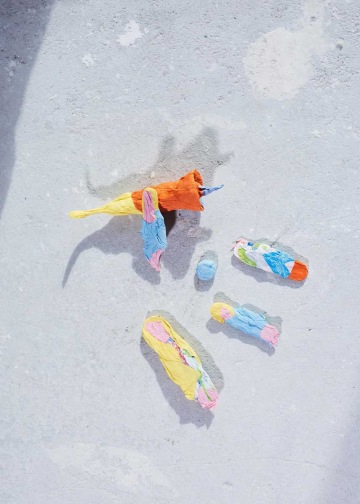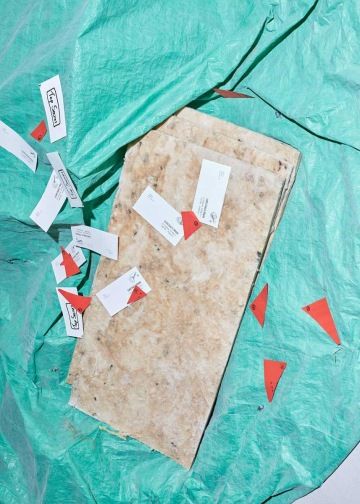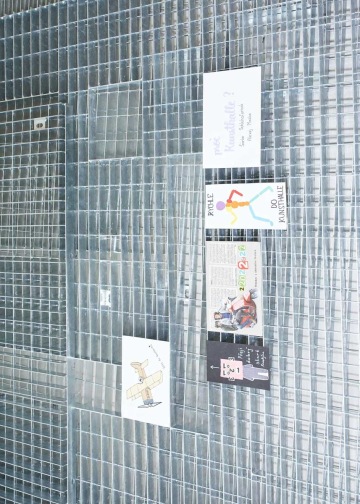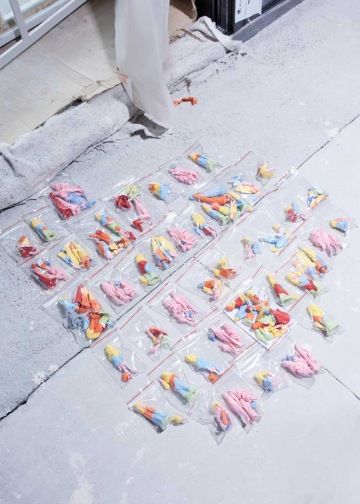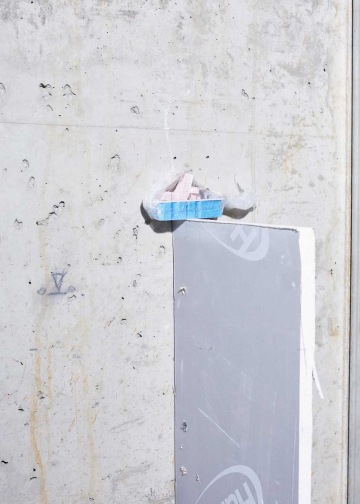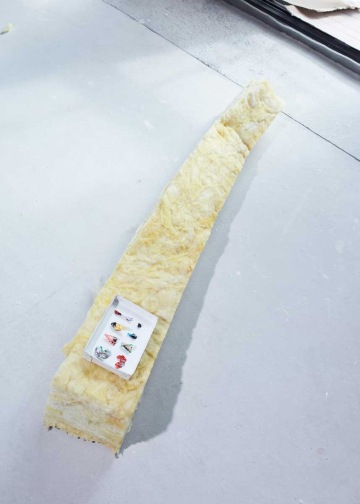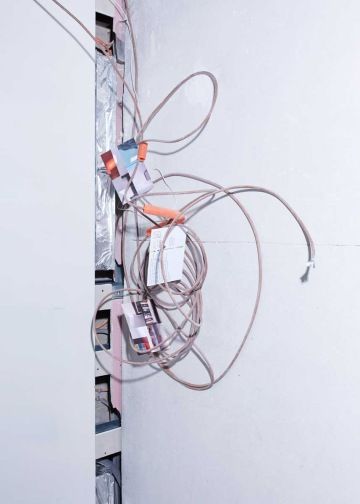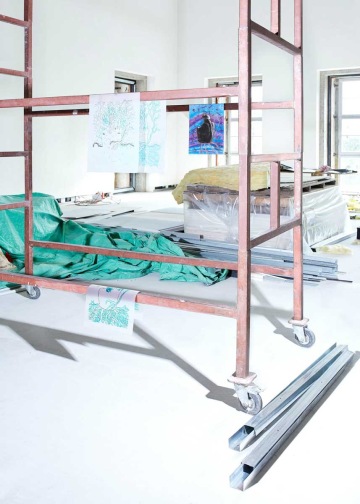Discover new works from a challenge to send art to Kunsthalle Praha
Secrets & transformations. That was the theme of our first art-based, mail-in challenge. Dozens of works from forty-four senders, including students and members of the general public, arrived from Javorník and Zlín all the way to Cheb. You sent us non-traditional postcards, collages, objects, and large-format canvases.
"An expert jury selected works for the installation that managed to captivate them the most thanks to their unique concept, approach, or interesting emphasis on the themes of mystery and transformation. Some works also came in continuations, had mysterious content hidden under a QR code, or were even accompanied by a small performance. We were pleasantly surprised by the participants’ creativity, interesting approaches, and most of all, their joy for making art," said Martina Freitagová & Barbora Škaloudová, the coordinators behind the mail-in challenge.
Take a look at the selection of most interesting works, which photographic duo Shotby.us photographed directly at the completed Kunsthalle Prague. And be on the lookout for our next challenge, which we’ll be launching for you in October! Follow us on our website and social media or subscribe to our newsletter so you won't miss a thing.
-
Lenka Štorková a studenti z Gymnázia Cheb
-
Jaroslav Diviš
-
Bláhová Havlíček
-
Zdeňka Morávková a žáci ZUŠ Javorník
-
Václav Brož
A PAPER BOX LIKE A WORLD IN AND OF ITSELF interview with artist Jaroslav Diviš
One of the participants of the “Send Your Art” mail-in challenge was Jaroslav Diviš (*1981), listed as a creator of outsider art. He works with an incredible dedication and enthusiasm, which is based on the primary artistic expressions of humankind. With a natural-born, self-taught talent, he is able to transform every-day, easily-accessible materials into distinct drawings, paintings, and objects that hide strange, troubling secrets. He carefully packs up his works into simple bags and sends them off in boxes to exhibitions, collectors, or friends. Completely in the spirit of mail-art, he lets them live their own lives.
How do you approach your own work?
I take my work seriously, but also with a touch of humor. There has to be an element of surprise and adventure in it.
What attracted you to our “Send Your Art” mail-in challenge?
The package format, sending by mail, packing, unpacking, discovery, ritual. The moment Robinson finds a chest full of stuff on the seashore or an old dusty box in an attic full of boy's treasures. Today, it’s probably not so romanticized, but in a hundred years and even today there’ll be a nice history. A paper box, this is a world in and of itself. Opening it doesn’t let an artwork fade, but rather live on. And perhaps also because there’s no artistic intention in it, just a boyish sense of playfulness and an interest in archeology, archiving, and collection. I always imagine finding an old paper box in the attic and it will be full of knick-knacks. But I know that in order for something to be hidden somewhere, someone has to invent, make, and hide it. And so I create everything from doodles and paintings to toys and figurines. However, not in an infantile spirit, but rather thanks to the knowledge and enthusiasm that prehistory and primordial artistic expression form an integral part of the ancient past and the dark ages, but also of our present, whether in the works of children or primates. And so I search, research, and discover.
The figurines made of tissues that you sent to the Kunsthalle Prague as part of the mail-in challenge are packed in individual bags in various combinations. It’s kind of like a “wrapped story” that everyone can unravel for themselves...
The bags are more or less just a practical package for distribution to the exhibition. I have a sense of practicality, and the boyish dimension of plastic soldiers in a bag also plays a role in this. The basis is a ritual. Someone wants to open them for themselves, someone wants to choose from a pile of different bags and then pack them up and hide them again. And yes, it's a “wrapped story,” be it collectively or individually. I kept the bags hidden in various places outside or in buildings away from the weather, and maybe they're still out there, or someone found them by now. Who knows. The figurines are both a reference to and an instruction for creating something “out of nothing” and serve as a reminder of themes that I keep revisiting: prehistoric statues, protoplastics, and experience through touch, etc.. The idea of a prisoner making chess pieces out of bread and Alén Diviš observing doodles on the walls in La Santé prison. One plays chess, the other is a visitor in a gallery.
Do you have any favorite artists or works that inspire you?
It’s difficult to choose from so many, but it’s mostly prehistoric art I fancy. The creation of humankind as such, the ability to create, hypertrophic creativity, handwriting. I’m also fascinated by the drawing activity of apes, the very first artistic expression, from the jumbling of lines to soulful shapes. I’m inspired by people's destinies and lives. For me, an artist is anyone who has a life story or a vicarious archetype to rely on. The names are always changing, but the character Človíček from the show Večerníček before bedtime and Alén Diviš remain.
This interview was conducted by Martina Freitagová,
Head of the Kunsthalle Prague educational programs
